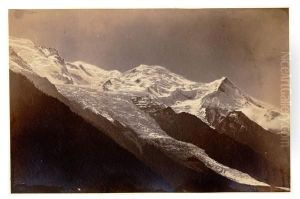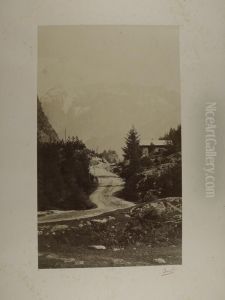Louis-Auguste Bisson Paintings
Louis-Auguste Bisson was a prominent French photographer, best known for his pioneering work in the field of photography during the 19th century. Born on August 4, 1814, in Paris, France, Bisson embarked on his photographic journey in an era when photography was still in its infancy. He was part of the early group of photographers who explored and expanded the possibilities of the daguerreotype process, a method of creating images that was groundbreaking at the time.
In the 1840s, Louis-Auguste Bisson, along with his brother Auguste-Rosalie Bisson, formed the photographic partnership known as 'Frères Bisson' or 'Bisson Brothers.' The duo was renowned for their architectural and landscape photographs, capturing Europe's grandeur with a remarkable level of detail and clarity. One of their most significant contributions to photography was their daring expedition to capture the first photographs of the summit of Mont Blanc in 1861. This feat was not only a technical challenge, due to the cumbersome equipment and the sensitivity of early photographic materials to temperature and light but also a physical challenge because of the harsh conditions and the altitude.
The Bisson Brothers' work received widespread acclaim, leading to commissions from the French government and Napoleon III himself, who were keen to document and promote the architectural heritage and scenic beauty of France. Their photographs of Gothic cathedrals, French châteaux, and other historic sites are considered some of the earliest and finest examples of architectural photography.
Louis-Auguste Bisson's contributions to photography extended beyond his work with his brother. He was an innovator and a mentor to other photographers, experimenting with photographic techniques and materials. Despite the artistic and historical significance of his work, the advent of more portable and user-friendly photographic processes eventually overshadowed the daguerreotype, leading to a decline in the Bisson Brothers' prominence towards the end of their careers.
Louis-Auguste Bisson passed away on April 22, 1876, in Paris. His legacy, however, endures in the rich visual record he left behind, which continues to be a valuable resource for historians, art historians, and photography enthusiasts. The Bisson Brothers' pioneering spirit and their contributions to the development of photography as an art form and a means of documentation have cemented their place in the history of photography.

